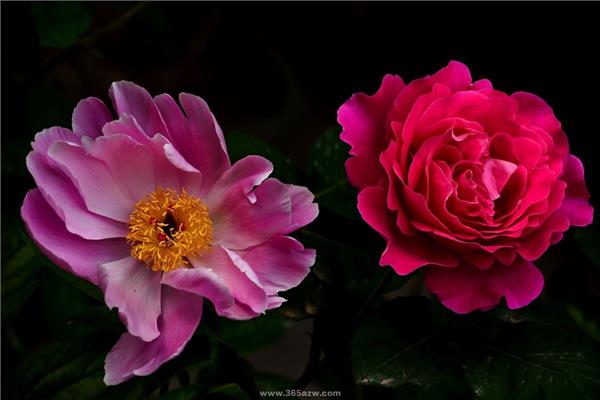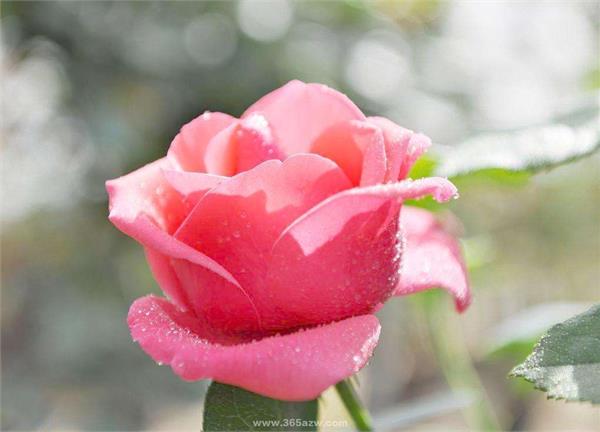A detailed introduction to the characteristics and functions of rose flowers
Rose not only has a long history, but also widely used, its edible value, medicinal value, industrial value are huge, let's take a look at the characteristics and functions of rose in detail.

A detailed introduction to the characteristics and functions of rose flowers
Unlike other flowers, which last no more than ten days, the rose can bloom all the year round. This one is in full bloom, and the other one is sweeping in a mighty array, dominating the branches. However, the best is always yet to come, maybe the next one will win people's attention with what kind of posture, or cold and noble, or elegant and graceful.
You see, the color of the petals is so rich and colorful, some white through red, some pink tender and simple, and some bright and moving, not so lively.

Many people know that the rose is pleasing to the eye, so it is used to decorate, but its medicinal value is also inestimable. If female friends have problems such as abdominal pain and dry stool during menstruation, or just add light color, they can collect 10 grams of Chinese rose, 10 grams of Angelica sinensis, 10 grams of Radix Salviae Miltiorrhizae, 10 grams of Radix Paeoniae Alba, plus a little brown sugar frying clothes. Start taking it 3 days before menstruation, and you can add an egg to boil together to ensure that the disease is cured.
First, the characteristics of Chinese rose
1. It has strong cold resistance and can endure a low temperature of-15 degrees.
2. Most of the flowers are small, and the petals are usually 5.
3. The taste is sweet, and the thorns on the branches are small and large, so they are easy to see.
4. The rose blossoms throughout the four seasons, so it is known as the "queen of flowers".
Rose has strong medicinal value.
1. Women have amenorrhea or thin menstruation, light color but little amount, small abdominal pain, mental disorders and dry stools, or the above symptoms appear during the menstrual period. Shengchun decoction has a good therapeutic effect.
2. The combination of rose and generation flowers is a good prescription for the treatment of menstrual diseases caused by disharmony between qi and blood. Use rose flower, generation flower 15g each, fried water suit. The rose flower invigorates the blood, and the generation flower tends to be energetic.

3, fresh Chinese rose 20g boiled bubble service, can treat irregular menstruation or abdominal pain.
Third, rose flowers enrich our recipes
Rose porridge: need 100 grams of japonica rice, 50 grams of longan meat, 30 grams of rose flowers and 50 grams of honey.
Rose soup: need 50 grams of rose, 30 grams of rock sugar and 10 grams of rice wine.
Rose scented tea: pre-treat women with irregular menstruation or dysmenorrhea.
Rose Bingtang drink: treatment of lung deficiency cough hemoptysis, continuous administration is effective, pre-treatment blood viscosity is on the high side.
Rose liquor drink: treat muscle and bone pain, fall injury, foot and knee swelling and pain, prevention and treatment of high blood viscosity.

Rose is an erect shrub, 1-2 m tall; branchlets stout, Terete, subglabrous, with short hooked prickles. Leaflets 3-5, sparse 7, even petiole 5-11 cm long, leaflet broadly ovate to ovate-oblong, 2.5-6 cm long and 1-3 cm wide, apex long acuminate or acuminate, base subrounded or broadly cuneate, margin sharply serrate, both surfaces subglabrous, upper dark green, often glossy, lighter color below, terminal leaflet stipitate, lateral leaflet subsessile, total petiole longer, with scattered prickles and glandular hairs Most of the stipules are Adnate to the petiole, only the apical part is auriculate, and the margin is often glandular hairy.
Several flowers are concentrated, sparsely solitary, 4-5 cm in diameter; pedicels 2.5-6 m long, subglabrous or glandular hairy, sepals ovate, apex caudate-acuminate, sometimes leaflike, margin often pinnate lobes, sparse entire, outside glabrous, inner surface densely villous; petals double to semidouble, red, pink to white, Obovate, apex notched, base cuneate. Style free, extending beyond the mouth of calyx tube, ca. as long as stamens. Fruit ovoid or Pyriform, 1-2 cm long, red, sepals deciduous. The florescence is from April to September and the fruiting period is from June to November.
Related
- Wuhan Hospital Iron Tree Blooming Result Was Instantly Frightened by the Gardener Master
- Which variety of camellia is the most fragrant and best? Which one do you like best?
- What is the small blue coat, the breeding methods and matters needing attention of the succulent plant
- Dormancy time and maintenance management of succulent plants during dormancy
- Minas succulent how to raise, Minas succulent plant pictures
- What are the varieties of winter succulent plants
- How to raise succulent plants in twelve rolls? let's take a look at some experience of breeding twelve rolls.
- Attention should be paid to water control for succulent plants during dormant period (winter and summer)
- Watering experience of twelve rolls of succulent plants
- Techniques for fertilizing succulent plants. An article will let you know how to fertilize succulent plants.



